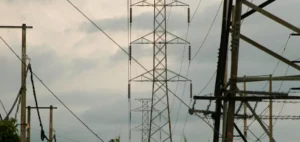A heat wave sweeping across the western United States led to a decrease in wind and solar power generation, which in turn led to an increase in the use of natural gas to meet growing energy demand.
Impact of the heat wave: Historic rise in electricity prices in the northwestern United States
The extreme heat has had a major impact, considerably reducing wind and solar energy production. This reduction has necessitated increased use of energy generated from natural gas to meet the growing demand for electricity.
As a result, electricity prices have risen significantly on the wholesale market, mainly in the northwestern region of the United States. In this region in particular, prices reached an all-time high of $1,004/MWh for August 16 delivery, according to data provided by Platts. Surrounding geographic areas were also affected by this upward price trend, although they did not set new pricing records.
Weather alert: Dangerous heatwave and increased fire risk in the Northwest – Record temperatures in sight
A ridge of high pressure generates a heat wave with dangerously high temperatures, leading to weather warnings. Increased risk of wildfires due to strong lightning and winds, with more than 100 active fires reported in Bonneville Electric Power Administration areas.
“A dangerous heat wave will persist in the Pacific Northwest and Northern Rockies as a strong ridge of high pressure remains in place aloft, with most of the region under heat-related advisories and warnings,” said the U.S. National Weather Service in its daily forecast discussion.
“Numerous near or broken maximum temperature records are possible. Overnight minimum temperatures will also be close to record levels, offering little relief from the heat overnight.”
69% rise in gas prices, energy transition and preventive measures in California
As wind power declines, the share of thermal power increases, mainly through natural gas, thus offsetting the drop in wind power. This transition has had an impact on natural gas and electricity prices: a 69% increase in one day for natural gas, reaching $8.055/MMBtu for August 15, also leading to a rise in electricity prices.
California forecasts a sharp increase in electricity demand due to the heat wave, possibly exceeding the previous record. To guarantee energy availability, restricted maintenance operations are carried out to avoid breakdowns and minimize disruptions to the electricity supply.






















